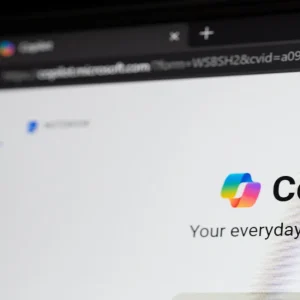
It’s one year since the launch of the Local Digital Declaration, a rallying call for local government organisations to build better public services by identifying and pursuing digitisation projects, writes Nick Pike, Regional Vice President UK&I at OutSystems. There are encouraging signs that momentum is building, with 145 local councils signing the declaration and specifying digital projects and the public benefits they will deliver.
Appetite for delivering digital public services is growing in tandem with increasing interest in using IoT-collected municipal data to create smart communities. This might include traffic, parking and public transport information, pollution levels and waste management data; the applications are endless.

By collecting and analysing this data, publishing and integrating it with digital public service applications, local government organisations can improve citizens’ quality of life and make their area a better place to live and work.
This momentum around data-driven digital services and smart city data means it’s an exciting time to be working in the local government space, but that’s not to say there aren’t challenges, too.
The Conundrums facing Chief Digital Officers
If the Local Digital Declaration represents the will to push out the local government digital footprint, it’s their Chief Digital Officers (CDOs) that must find the way. A recent roundtable discussion undertaken by Local Government Digital highlighted the issues that CDOs face in driving the digital agenda.
One of the key issues CDOs face is the tension between “keeping the lights on”, by continuing to support legacy technology, and acting as a visionary to design and trial new digital services. Limited budgets have to be shared between maintaining existing systems and developing new approaches. This can block investment in new technology platforms.
Read this: G-Cloud 11 Brings All the SMEs to the Yard
Linked to this, CDOs also face a cultural hurdle. There’s a prevailing assumption that they head an operational division primarily focused on fixing laptops and network issues, rather than rolling out strategically important, transformative services.
Political tensions are at work, too. CDOs report that the performance of existing organisational technology can act as a brake on discussions around new technology. Until existing technology works smoothly, stakeholders can be cynical – unwilling to explore future developments. This creates a chicken and egg situation where CDOs need to provide robust, working examples of successful solutions quickly and at low cost, before they can unlock the door to further strategic discussion and get a mandate for their digital agenda.
Cost Uncertainty and Future Planning
On top of political and cultural challenges are the issues of cost control and vendor lock-in. This isn’t a new phenomenon, of course. Over decades of IT investment many local authorities have found themselves tied to suppliers and technologies that no longer deliver the right IT environment. Understandably, many are determined to avoid falling into that trap again.
Another problem for Local Authorities is uncertainty over the long-term costs of technology solutions that enable digital transformation. While day one purchase costs may be obvious, there is often little clarity over the costs of a long-term commitment. Pricing may be linked to the number of application objects developed, which can be difficult to accurately define. Similarly, while a Local Authority may have a fixed roadmap of the apps it needs to develop over the next six months, anticipating requirements over the next two to three years is far more complex.
The issue of who owns the intellectual property of the developed solutions is a further concern. If Local Government organisations are going to invest in developing applications to deliver digital public services, they need to know that they own the IP and won’t be held to ransom later down the line. They may wish to share their solutions with other authorities so that a greater social benefit can be achieved, so they need the freedom to do that.
While CDOs try to navigate this complex landscape, citizen expectations are rising all the time. Consumer-facing apps are setting the standard for intelligent, data-driven services and the public sector is under pressure to keep pace with services for both citizens and employees.
Navigating Out of this Complex Maze
Here at OutSystems, we regularly see all these competing factors in our work with Local Government organisations. To have meaningful discussions with stakeholders about how to move their digital agenda from ambition to reality we have to guide CDOs through them and show how a low-code approach can help address these issues.
One organisation that has successfully negotiated these challenges is Worcester County Council. The team took a bold approach when it published its ambition to move towards ‘Digital by Default’, delivering 100% of public services digitally and aiming to become “a world-class digital council”. They knew that, to keep stakeholders on board, quick wins that demonstrated the value and cost-savings digital services could deliver were essential. To achieve results fast, the council used OutSystems low-code development platform to build its first app.
The first service to get the digital treatment was the council’s Copy Certificates service. The previous online system only worked properly half the time. It was a classic example of the “keeping the lights on” issue, needing extra effort from both staff and customers but not reliably delivering the service. The new app took Worcester’s existing team of six developers eight weeks to deploy. Customers apply and pay for certificate copies online, and can track the progress of their requests. Now, 70 percent of applications for certificate copies are made online.
The swift deployment and take-up by users delivered that quick win needed to prove the concept and get that stakeholder buy-in that CDOs often find difficult to achieve. The six-developer team has now delivered 53 apps covering everything from adult learning course registration up to an ambitious multi-agency data sharing project that aims to deliver a “single view of the child” to help provide the right professional support in safeguarding cases. Projected savings from the digitisation project are in the region of £2.8m over three years, providing ROI of 442%.
To push faster adoption of digital public services nationwide, Worcester County Council has published all its apps under an open-source licence, something it can do because it owns the rights to everything it develops using OutSystems. This means other councils can get digital services running very quickly, with minimal investment.
Clearing up Cost Control Challenges
Cost clarity remains a challenge for the sector and I believe the responsibility lies with technology providers to make the platform economy work for local government organisations. We need to offer as much transparency and certainty as possible when we’re helping scope digital roadmaps. That might mean offering tiered pricing and budget ceilings so that local authorities know in advance the maximum financial commitment they are making. Fundamentally, the keynotes of successful digital transformation are flexibility and transparency, so our pricing should reflect that.
Pushing out the digital footprint of local councils has the potential to transform both the citizen experience and public finances if Chief Digital Officers can navigate the cultural, political and budgetary challenges they face. The key is the ability to deliver quick wins that get stakeholder buy-in and prove ROI, giving CDOs a mandate to fulfil their ambition for providing digital public services that deliver.
See also: How Local Governments can Unlock the Power of the Cloud






